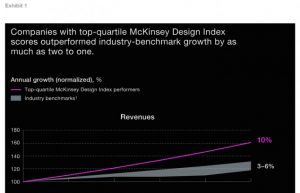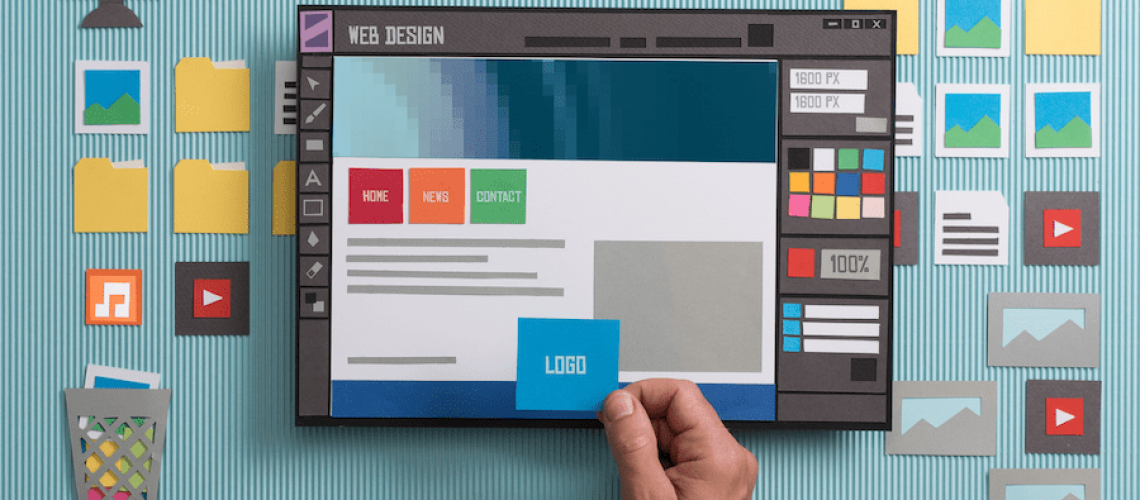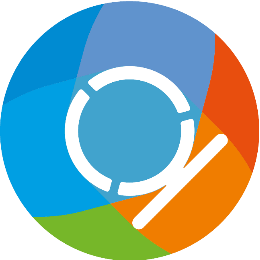Boosting Your Business Value With the Power of Seamless Design
Companies with a greater emphasis on design seem to win out in every sphere. From revenue to customer satisfaction, greater levels of growth and more predictable long-term sustainability, the power of seamless design is doing more to boost business value right now than any other singular investment.
It may have something to do with the fact that better design starts with a customer-centric approach and culture. An alignment, in other words, with internal and external priorities. And while numbers don’t necessarily give the whole picture, like scaffolding, they help support decision-makers as they take a closer view into the details of the structure.
Certainly, that’s what McKinsey’s groundbreaking study on design for better business value shows both shareholders and company executives, allowing us to examine:
- Why companies with design-led experiences are on the up-and-up in every way
- What the elements are that are absolutely integral to bringing business value
- The specific, actionable principles each company can incorporate to experience the promised land of growth-revenue-brand-longevity through something like design that, when it’s working well, is supposed to quietly move into the background
Let’s take a look.
Convergence is Upon Us
Two minutes into a conversation at a networking event, a UX designer who’s asked what his work actually consists of struggles to come up with just one neat little phrase that might cover the breadth of value that design brings to the company’s business.
If he were doing an AMA session at a conference, he might stay silent and simply pull up this oversized Venn diagram to try and succinctly respond to the question:

Source: Visual.ly
Research by McKinsey reveals a very clear reasoning for incorporating, enhancing and focusing on the way in which design is actually the purveyor of professionalism, productivity, and profits.
Of 100,000 design actions surveyed from the design practices of 300 publicly listed companies within a five-year period, Mckinsey found that good design equals “superior business performance.”
Known as the “McKinsey Design Index,” top performers were those that showed the greatest improved financial performance, in accordance with four broad design principles. Companies with top-quartile MDI scores outperformed the standard industry benchmark “by as much as two to one.”

Source: McKinsey Design Index
To understand why design is so integral, let’s go back to that Venn diagram. The most obvious takeaway is that the lines are blurred between disciplines, and each intersects and converges — to a greater degree than ever before.
The reason that companies with specific design practices perform significantly better than their competitors is because:
- Excellent user interfaces and customer experiences are a standard expectation (with tangible benefits like increased user retention, more targeted marketing budgets, greater levels of profitability due to customer satisfaction and brand loyalty, etc.)
- There is a major level of convergence going on, not only in the operational “backend” of companies but in the physical and digital worlds (think omnichannel shopping experiences and QR codes), along with a blurring of lines between products and services (think Microsoft’s branch into cloud services, under Satya Nadella, responsible for the greatest profits in Q4 of 2017)
Elements of the Design Process Integral to Outstanding Business Results
The design process, in the context of direct financial performance and revenue generation, comes down to four broad but essential components.
- Analytical leadership: Being able to implement the software, tools, and technology that measure the drivers of design performance with the same rigor, focus and deliberation as revenues and costs
- Cross-functional talent: Nurturing teams of designers and developers that work together, along with the structures — like running sprints — that make user-centric design part and parcel of everyone’s focus or job, rather than being siloed to one department
- Continuous iteration:Making the development process a risk-reduced process by continually listening, testing, and iterating with end-users
- User experience: Bringing together the disciplines and measurements of physical, digital and service design, especially breaking down the internal or operational walls
We’ve already seen “data-driven” decisions. But what about “design-led decisions” in improving business value?
This matters now more than ever because of the opportunity that businesses have to tackle their processes from a standpoint of cost-efficiencies, rather than cost-cutting.
You see, large- to medium-format enterprises can learn a thing or two from the behavior of lean start-ups, which must rely on prototyping and iterative learning in order to keep their development fiscally responsible and sustainable.

Image source: Unsplash
Design-led decisions will also become increasingly important as we rely more and more on large swaths of user data and AI as sources of new insights. These advances and technologies will call on new techniques that are themselves guided by design, such as computational design and analytics.
We’re already seeing that rapid access to a multitude of interactions with real customers means a better ability to reach out at just the right moment, or present just the right offer, and create a conversion. Now, these interactions are fractured through multiple channels, especially over social media and “smart” mobile devices.
These pivotal developments are ongoing. Nearly all of them call for the user remaining at the very center of all process and design considerations. But that also means they’ll need to be at the heart of business decisions because user design is driving priorities forward.
Five Principles of Design-Led Customer Experience
How do we make elements like analytical leadership, cross-functional talent, continuous iteration and user-experience across disciplines guide customer experience? What are the actual practices that businesses looking to enhance their value will need to focus on?
Design is the differential that makes all the difference to the customer. Their delight at novel experiences and their satisfaction derived from an app that not only anticipates their needs but simplifies the process and delivers them the end result they’re looking for — these all translate into a heightened user experience, a preference for the product or service the company offers.
Every software development or web app development project begins by creating a repository of a customer’s needs and perspectives that come from the goal of the app itself. What needs does the development fulfill?
A customer’s needs and perspectives are not just the starting point. In agile development and design-led customer experience, it’s the guiding principle of all future changes, versions, and patches.

Image source: Unsplash
While design-led experiences have been in play for a long while now — think, Apple’s obsession with beautiful type and font faces evolving to beautiful user interfaces — the way to stay innovative and question the norms is to draw inspiration from other industries.
Consider, for example, the nature of “biomimicry.” It’s an approach where designers and engineers look to nature’s most fundamental mechanics — the scales on a fish for protection and light reflection, or the photosynthetic process of plants to understand and “mimic” energy conversion — in order to solve complex human problems through design.
3. Get a glimpse of what’s on the horizon
Because design-led experiences are half experimental and exploratory, half guided by actual customer need to develop a real solution, the resulting solution (in the form of a product, service or even feature) can be creative enough to actually pave the way for a new iteration on an upcoming trend.
This is also why iterative approaches to design and development are so useful — they harness the power of a collective team, through structures like sprints, in order to find a solution but pave the way for something entirely new.
4. Empower multidisciplinary teams
Design-led experiences call on the convergence of expertise, of more than one function to build something as robust as an app, enterprise software or an interface.
There is also a convergence between the physical and digital worlds, as well as products, services, and environments.
A great example of this is augmented reality, virtual reality, and artificial intelligence. The software “AdMind,” for example, uses predictive analytics and artificial intelligence to manage and deploy more strategic Adwords campaigns.
This convergence calls for an evolution in the way that teams work. Remember that, in order to use design as a boost to business value, it must not be siloed off as a singular department’s priority — instead, it must remain at the fore, with cross-functional teams making it a point of focus in their own respective disciplines.

Photo credit: Campaign Creators
5. Use agile techniques to prototype experiences and business models
Agile development for an app development company syncs quite effortlessly with design-led customer experience.
It’s a methodology for development projects that not only empowers teams to work together in an iterative and innovative manner, it’s also a process that puts the user right at the heart of all its actions.
This iterative approach also offers a better way to incorporate customer feedback and research into the project. It’s never quite the “end” with Agile because development is ongoing. And at the heart of this development must be the user.
Besides a design-led approach to customer experience, there’s one more thing that McKinsey’s top successful companies have realized: the boundaries between products, services, and environments are necessarily blurred.
An “integrated” and cross-functional view is not only necessary in order to design valuable end-to-end experiences for customers, but it also gives businesses the competitive advantage they need.
Convergence is, in fact, completely changing the rules of the game. The best way to keep stable business profits is to bring business value through design that focuses on what the customer needs.









